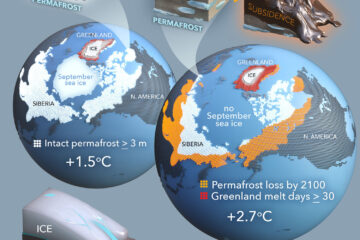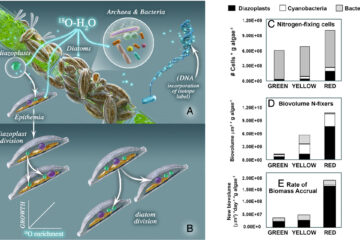Mycorrhizal controls on belowground litter quality
Plant productivity and ecosystem productivity are strongly influenced by nutrient availability, which is largely determined by the decomposition rate of plant litter. Belowground litter inputs (dead roots, mycorrhizae, and exudates) are larger than aboveground litterfall in many systems. Chemical quality and diameter primarily control decomposition for coarse roots, but these patterns do not hold for finer classes of roots, which are frequently colonized by mycorrhizae. Though mycorrhizal status is known to drastically alter root chemistry, morphology, life span, and exudation, it has never been explicitly considered as a factor affecting root decomposition. We hypothesize that mycorrhizal status substantially influences fine root decomposition rates.
Both ectomycorrhizal (EM) and arbuscular mycorrhizal (AM) fungi can change root properties but do so in different ways. Dominant tree species of most cold and temperate forests rely heavily on EM associations. EM fungi form massive structures that envelop fine roots. Roots infected by ectomycorrhizae have higher nitrogen concentrations than nonmycorrhizal roots, which would be expected to increase decomposition rates, but much of this nitrogen is bound in recalcitrant forms, such as chitin, so the net effect on decomposition is difficult to predict. AM fungi lack elaborate, macroscopic structures and may not alter root chemistry as profoundly.
In addition to mycorrhizal roots, external fungal hyphae can contribute significantly to ecosystem carbon budgets and thereby influence rates of soil carbon turnover. Hyphae have commonly been considered a rapidly decomposing carbon pool, though this has never been demonstrated experimentally. If hyphae are produced at the expense of rapidly decomposing root exudates, then the net effect of hyphal litter production might be to reduce soil microbial activity and overall carbon cycling rates. Based on known differences in morphology and chemistry, EM hyphae may be more recalcitrant than AM hyphae. In summary, we submit that mycorrhizal status could substantially influence fine root decomposition and soil carbon processing rates, potentially explaining some of the variation observed within and among individual plant species and ecosystems.


